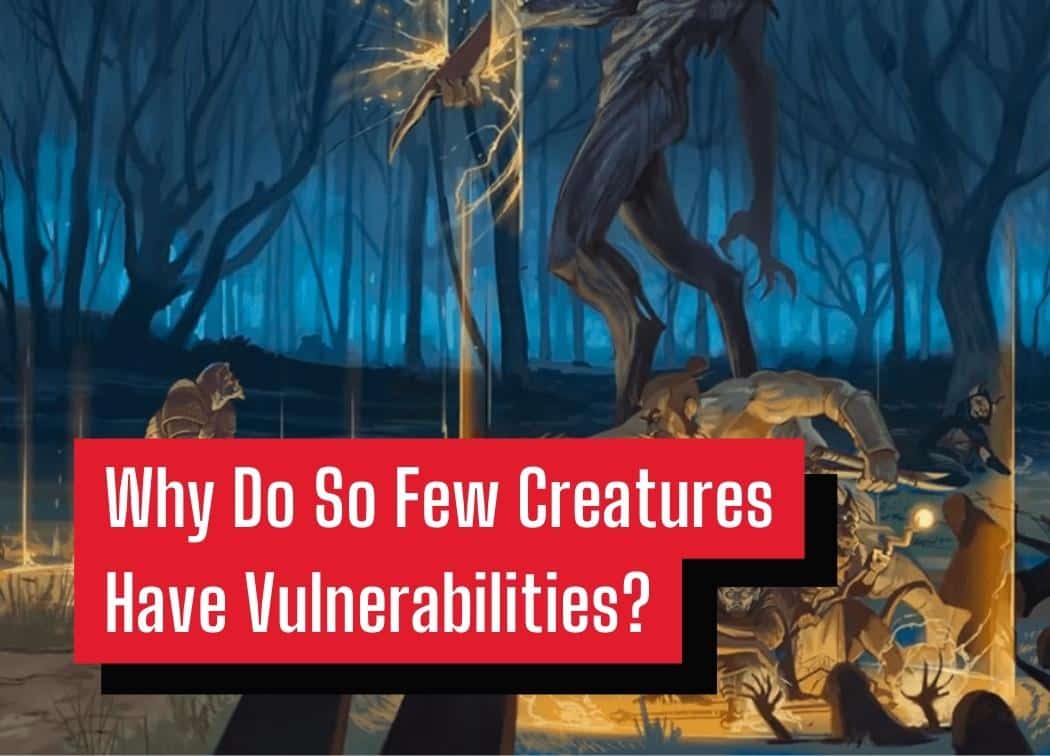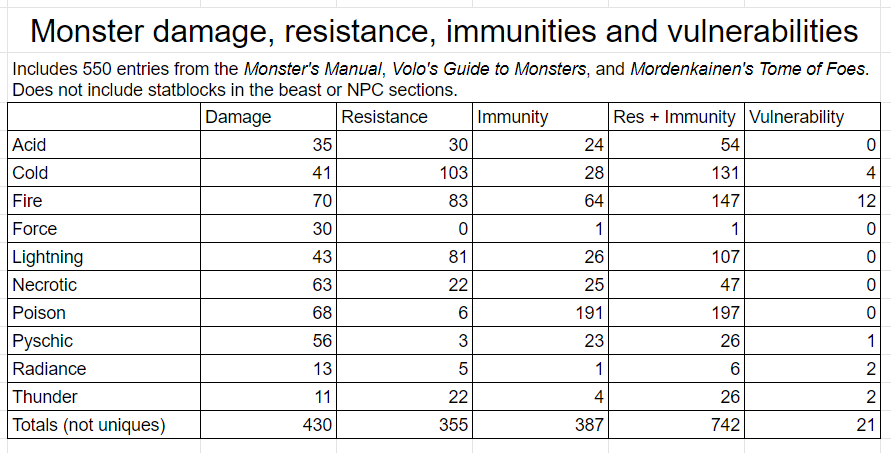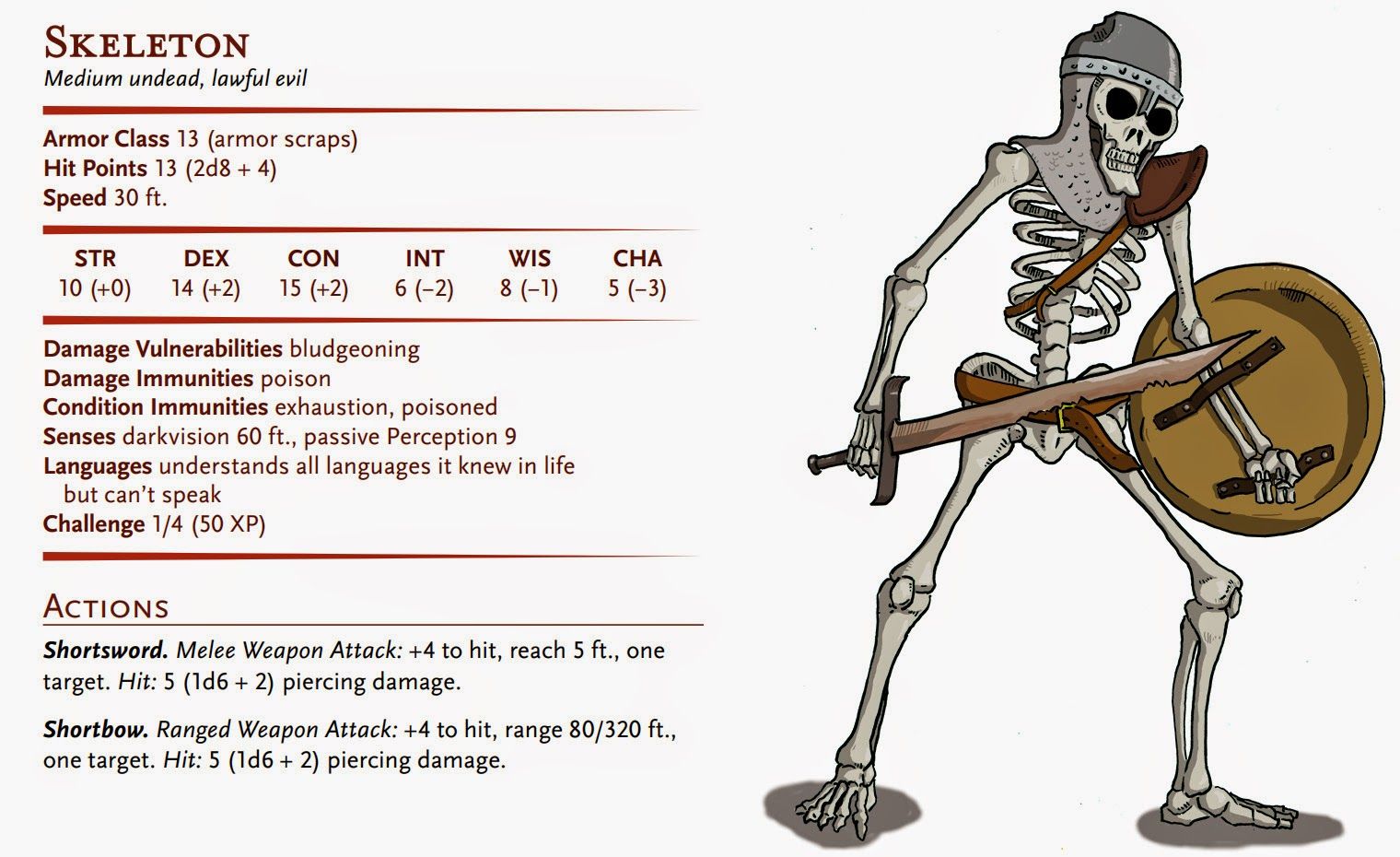Why Do So Few Creatures Have Vulnerabilities?

When I first introduced my friends to D&D 5e a frequent question I’d be asked was if a creature had any sort of damage type vulnerability. Most of us have some sort of video game background and love to dive deep into games to figure out what an optimal build or damage dealing rotation would be.
That being said, they quickly learned that while vulnerabilities are present in D&D 5e, it’s rare to find creatures with them. Especially in comparison to damage type resistances and immunities.

Taking a look at this wonderful chart created by /u/mrvalor we can see that between 3 official sourcebooks full of creatures only 21 total creatures have a damage type vulnerability. That’s absurd, right?
At first glance, I’d agree. Shouldn’t we try to reward the players for figuring out a creature’s weakness? Isn’t vulnerability a good way to do so?
It’s not, from a game design standpoint. While vulnerability may sound like a fun, tactical mechanic for the party to use to their advantage, in practice, it limits the party’s choices and tactics in a fight.
Vulnerabilities Pigeonhole the Party’s Tactics
Disliking vulnerabilities from a game design standpoint may seem like a contradictory stance from someone who is an advocate for character optimization and totally down to DM for min-maxers. But it’s honestly not.
A creature with a damage type vulnerability has a weakness. Mechanically speaking, this means that if the party can regularly damage this creature using the damage type they’re vulnerable to the creature effectively halving their total HP.
If you as a player have a way to effectively reduce an enemy’s health by 50% you’re always going to take that option.
Once you’ve figured out the creature’s vulnerability you’ll just spend the rest of the encounter doing the same thing over and over again. There’s no reason to change up your strategy. This isn’t interesting or engaging for either side of the table.
This is what I mean by vulnerabilities pigeonholing the party’s combat tactics. When you give a group of people easy access to the best way to solve a puzzle, why wouldn’t they always use that strategy?
How Can You Use Vulnerabilities to Enhance the Game?
Vulnerabilities are a “use sparingly” mechanic that DMs have access to. Like buffing/nerfing an encounter on the fly, dishing out vulnerabilities regularly will make the game less enjoyable. However, using this mechanic once in a while can enhance your game.
For example, one of the big bads of a storyline in my campaign was vulnerable to lightning damage. While this is a rare damage type for my party to use, I did give them potential access to weapons that could deal lightning damage. There were some heavy lore implications as to why Longbeard had a vulnerability to lightning damage as well.

Vulnerabilities are fun when they’re a) impactful, but not constantly present, and b) the creature has a reason to be vulnerable to that damage type based on their lore. Vulnerabilities are a tool for expanding the story or adding to the flavor of a creature, not for making combat more interesting.
To use vulnerabilities in a way to mechanically enhance your game you should make a beefy, (slightly) overpowered creature. Homebrew something that hits above their respective CR. A vulnerability will then act as one way for the players to deal with this excessive threat.
But Why Are Resistances So Common?
It’s interesting because while creatures with vulnerabilities are hard to find, a massive amount of creatures have at least one damage resistance and/or immunity. Resistances and immunities must be good game design, or at least a better-designed mechanic than vulnerabilities.
But why? Don’t they force players into rethinking their tactics just like vulnerabilities?
Yes, they do, but they do so in a way that doesn’t pigeonhole the party’s choices. While they do limit their tactics and decisions, they don’t create a single optimal decision for a character to make during combat.
Attacking a creature with a damage type that they have resistance to effectively doubles their HP. You would not want to continue to use this damage type against this creature if you find that it’s ineffective.
With that said, you tend to have a ton of different options. You’re now forced to find ways to be effective in combat that doesn’t revolve around that damage type. This could mean simply using a different spell, or it could mean getting creative with the Help action, grappling, or any other combat maneuver.
Conclusions
Forcing characters to try new things, and making combat more dynamic is good game design. Resistances and immunities limiting a couple of the players’ options is a very different concept than creating a single optimal strategy via vulnerabilities.
Vulnerabilities create this weird pigeonhole that encourages the players to stick to a single spell or weapon just because it deals a considerable amount of additional damage. It’s one of those mechanics that sounds fun on paper, but in practice becomes boring quickly.
There are plenty of ways to reward the party for trying different combat tactics or abilities. Vulnerabilities are sometimes a good answer for this, but more often than not they’ll take away the players’ ability to make meaningful choices in combat encounters.
My conclusion on vulnerabilities is to use them sparingly, and use them when the story or lore makes sense to include them.

What about things that should have vulnerabilities you didn’t list. For instance, werewolves/ therianthropes are vulnerable to silver (the actual term for shape changers. ^Lycanthropy^ is specific to those that can shapeshift into wolves). Also, most undead should be vulnerable to at least some extent to turning. In AD&D, one of the results was “destroyed”, which imo is something i think should be brought back.
I was talking specifically about the “Vulnerability” mechanic in D&D 5e in this article. Not weaknesses that creatures have in general.
Werewolves, werebears, etc. aren’t vulnerable to silvered weapons in D&D 5e. They are immune to any nonmagical weapon that isn’t silvered which is actually much more powerful for their statblock. Essentially this means that unless you are attacking with a magic weapon or a silvered nonmagical weapon the therianthrope (that was a cool word to learn) won’t take any damage. If they had a vulnerability to silvered weapons they’d be taking 1x the amount of damage by any weapon and 2x by a silvered weapon.
There is still a destroy undead feature in 5e for turning. It’s exclusive to Clerics at 5th level+.
I kind of get what you’re saying. However, why is that any different from Warriors always using “great weapons”, Warlocks casting Eldritch Blast, or Rogues always using a Rapier? Vulnerability isn’t the problem, it’s Predictably and repetitiveness. Vulnerability (and resistance) can be a tool to break out of the norm, and reward versatility.